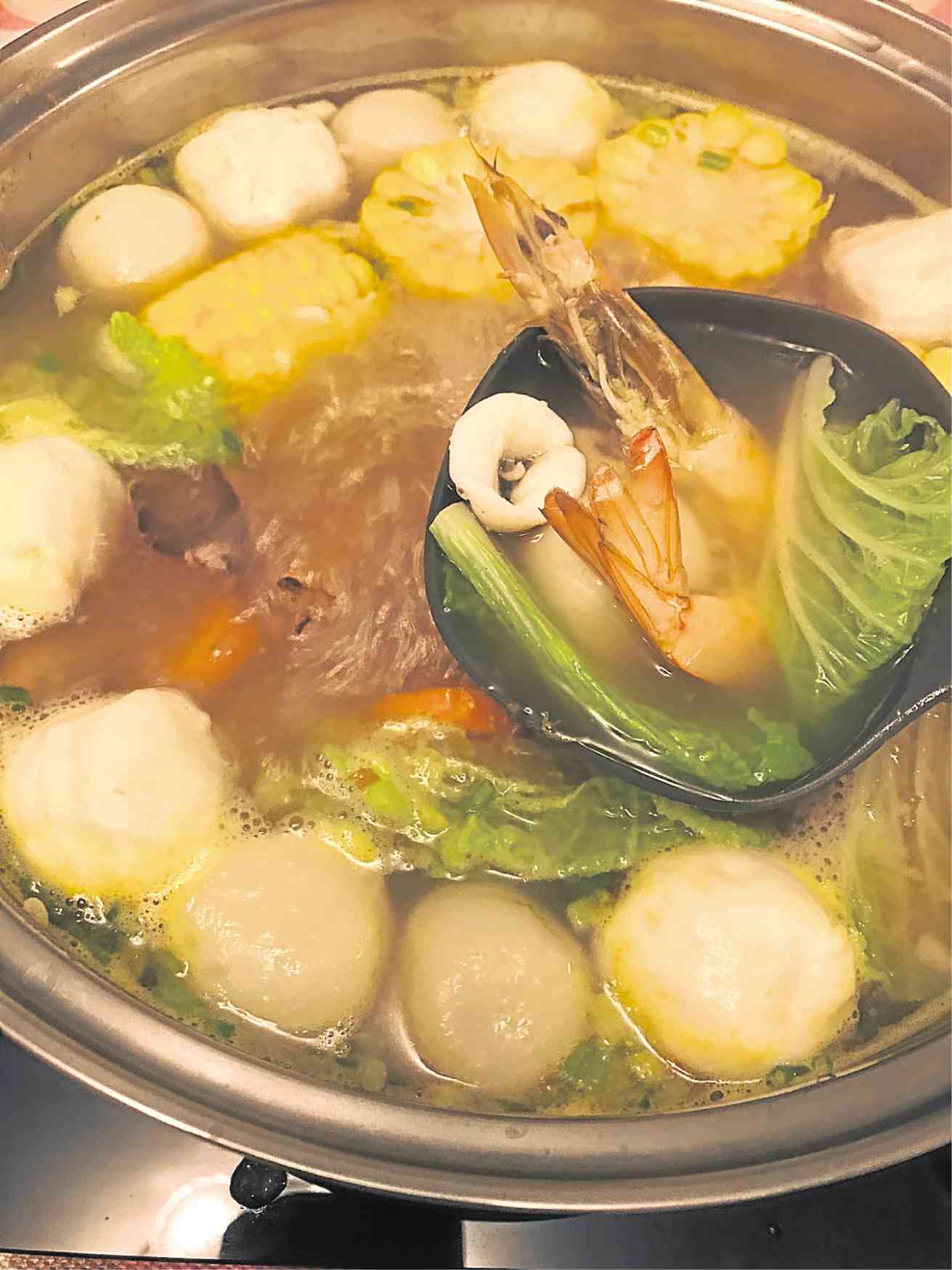I was ecstatic when a friend gifted me with a tabletop induction cooker. It came with a cooking pot of its own, curved upward at the edges to accommodate ladles and ladles of bubbling hot soup.
What this meant was that I could now cook my own hot pot, at my own dinner table, in my own home.
My family and I love hot pot cooking. What’s not to like? With a flavorful broth, lots of vegetables and fresh seafood, it’s the ideal meal—low fat, wholesome and delicious.
When you order it in a restaurant, it doesn’t take long to serve since it requires no cooking in the kitchen. You basically cook your own meal—in hot broth, with ingredients you yourself pick from the menu.
The ingredients are varied. Carnivores can choose thinly sliced beef, lamb, chicken or pork.
For those who prefer seafood, choices include prawns, squid, oysters, mussels, fish balls and squid balls.
Of course, there are vegetables like carrots, corn, Baguio pechay and spinach.
If you want to cook hot pot at home, you need not slave in the kitchen. Preparing the raw ingredients is quick—just wash the prawns, slice the squid, cut the vegetables and arrange them on platters. Once the broth is bubbling, the meal will practically cook by itself.
Here’s a recipe for seafood hot pot. If you have a table top induction cooker, you can cook this right at the dining table.
Just follow manufacturer’s instructions and take all precautionary measures so no one accidentally trips on the electrical connection, or topples the cooking pot on the table.
In addition, be extra careful if you have children around. If you don’t have a tabletop cooker, you can also cook this on the stove in your kitchen. Serve immediately, apportioning the cooked ingredients and the broth into individual bowls.

Seafood Hot Pot
½ k medium to large size prawns (about 12 pc)
½ k medium size squid
8-10 fish balls
8-10 squid balls
¼ k pechay Baguio
100-150 g sotanghon or udon noodles
1 large carrot
2 cobs of corn
6 c water
1 pouch Lee Kum Kee Soup Base for Hot Pot (choose from either pork bone, seafood or chicken flavors)
Wash the prawns and squid well. Squeeze out the ink from the squid and remove the heads but retain the tentacles.
Slice the squid into thin rings. Arrange the prawns, squid rings and tentacles, fish balls and squid balls on a large platter.
Separate the pechay Baguio into leaves (cut the leaves into two if they’re too large). Slice the carrot into rounds. Cut the corn into quarters (you should have eight pieces total). Arrange these vegetables on a separate platter.
Pour water into the cooking pot and bring to a boil. (If using a table top induction stove, follow the manufacturer’s instructions on how to use the stove and the pot.)
Bring the water to a slow boil. Dissolve the Lee Kum Kee soup base in boiling water to make a tasty broth, stirring occasionally.
When the broth comes to a boil, add the corn (because it takes longer to cook). After about five minutes, add the fish balls, squid balls and the noodles. Let boil one to two minutes, add carrots and Baguio pechay.
As all the ingredients cook, add the prawns and the squid rings and tentacles as desired. Note that the prawns and squid cook quickly (about one minute for the prawns, several seconds for the squid) so don’t let them stay in the broth too long or they will become tough.
Use a ladle to scoop out the broth and pour it into individual soup bowls. Use a slotted spoon to scoop out the seafood and vegetables and transfer them into individual plates.
Serve with dipping sauce. Makes about four to six servings.
Dipping sauce:
1 c light soy sauce
2 tbsp chopped garlic (or more if desired)
2 tbsp chopped green onions (or more if desired)
Combine all dipping sauce ingredients and serve. You may add garlic and spring onions if desired.
Cook’s tips:
If you’re cooking on the table, have separate tongs for putting the raw seafood and the vegetables into the broth.
Likewise, have a separate ladle for scooping the soup and a slotted spoon for scooping the seafood and vegetables.
Lee Kum Kee Soup Base comes in pouches and is available in the condiments section of large supermarkets.